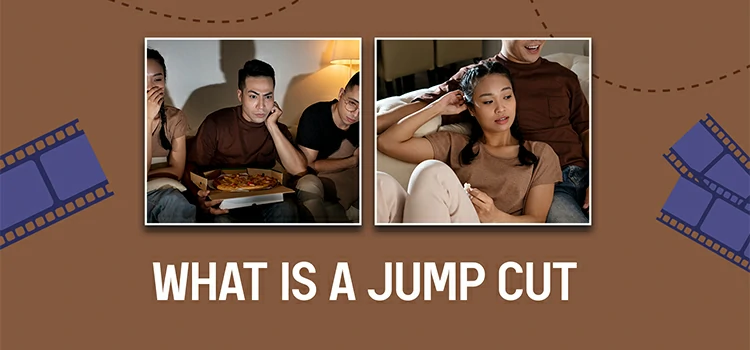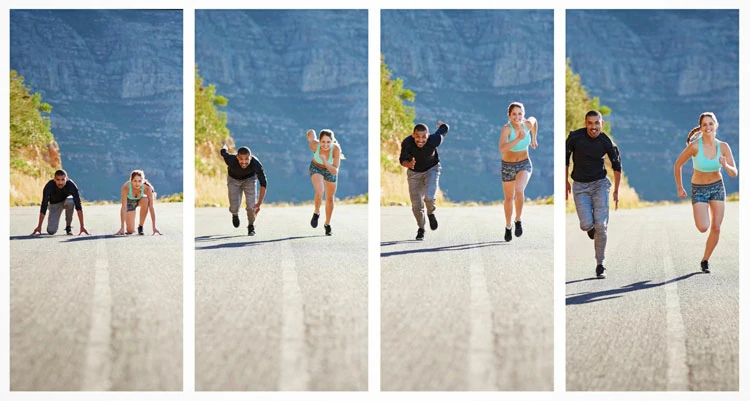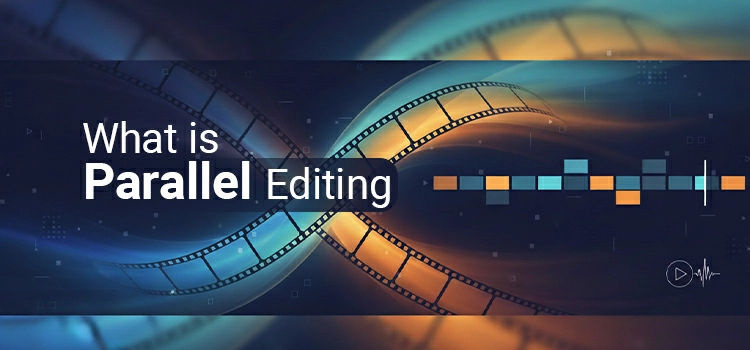What Is a Jump Cut? A Beginner’s Guide to This Bold Editing Technique

You ever noticed those tiny skips in videos where someone is talking, then snap, they’re a bit closer or mid-thought the next second? That’s a jump cut.
At first, it feels like a goof, but soon you realize creators do it on purpose: to skip the boring bits, speed things up, or show a quick emotional flip. This bold approach demands attention. Here’s how to make it work for you.
What Exactly Is a Jump Cut?

Picture this: You’re filming your best friend explaining why they quit their job. Mid-sentence about “toxic positivity,” they glance away, sigh, then snap back to your lens with watery eyes.
If you slice out that sigh and bridge the gap? That’s a jump cut. Technically, it’s an edit between two shots with nearly identical framing—same angle, same distance, where time or space visibly fractures. No dissolves, no wipes. Just… snap.
Your brain recoils at first. We’re wired to crave continuity. Filmmakers spent a century perfecting match cuts (such as the coffee cup becoming the sunrise) and L-cuts (hearing footsteps before seeing them) because they mimic how we hope life unfolds.
Jump cuts do the opposite. They expose the seams. They scream: “Look how much we deleted! Look what we’re hiding!” And weirdly? That honesty hooks us.
Neurologists have proven that we perceive reality in jump cuts. Remember driving to work last Tuesday? You likely recall the driver who cut you off (vivid), the argument replaying in your head (looping), and blank gaps where you zoned out at traffic lights.
Your memory self-edited like a nervous YouTuber trimming dead air. Jump cuts don’t distort reality; they hold up a cracked mirror to how we actually process time: in shards.
History of Jump Cuts in Film Editing
Let’s time-travel. 1896, Paris: Georges Méliès’ camera jams while filming a magic trick. A woman vanishes mid-sneeze. Audiences shrieked—not in fear, but awe. Méliès spent years hiding such accidents, stitching film with glue and prayer. Then came 1960, and a punk named Godard.
Breathless starts like a fever dream. Jean-Paul Belmondo’s petty thief stares at the camera, scratches his lip, and adjusts his hat. Each movement is cut up with edits that prevent the scene from breathing. Critics called it “amateurish.” Viewers felt their ribs crack open. Why? Because Godard got it: life doesn’t dissolve. It jolts.
Fast-forward to today’s bedroom creators. When Casey Neistat stares into his vlog lens, then blinks into a new location mid-sentence, we don’t see laziness. We see our own restless minds:
“Here’s my plan… snap …here’s me doubting it… snap …here’s me failing gloriously.” The jump cut evolved from rebellion to resonance because it finally gave editing permission to be as messy as we are.
Why Jump Cuts Are So Popular Today
Who wants to watch you hunt for your keys or say “like” seventeen times? But reduce jump cuts to cleanup tools, and you’re using a Stradivarius to hammer nails. Their magic lives in emotional archaeology:
Time as a Character: In The Social Network, Aaron Sorkin’s dialogue races, but Fincher’s jump cuts make it breathe. When Zuckerberg snarls, “You better lawyer up, pal,” the edit after isn’t trimming fat—it’s showing the synaptic gap between calculation and cruelty. Each cut is a tiny detonation.
Anxiety Made Editable: Try filming yourself “multitasking”: emails → snap → pacing → snap → staring at a wall. No voiceover needed. The cuts are overwhelming. Documentaries use this to map PTSD—flashes of artillery fire cut against a veteran’s still hands. The dissonance is the trauma.
Vulnerability as Currency: Safiya Nygaard’s beauty tutorials work because she keeps the jump where her eyeliner flickers into frustration. That glitch isn’t poor editing; it’s proof she’s human. Viewers lean in when she gasps mid-tutorial, whispering, “This isn’t working—cut—but here’s how we salvage it.”
When Jump Cuts Betray You (And How to Crawl Back)
The Good
✅ Speed with Soul: Deleting filler words is basic. Try this: Cut from a politician’s rehearsed smile to the same smile 0.3 seconds later—now with a micro-twitch in the cheek. Suddenly, the lie is visible in the gap.
✅ Disorientation with Direction: Horror films use jump cuts not to confuse, but to trap. Hereditary slices family dinners into shards where background details shift subtly—chairs multiplying, smiles curving sharper. The unease isn’t in the cut; it’s in realizing how much got cut.
✅ Digital Intimacy: TikTok poets use jump cuts like breath marks. A stanza ends → snap → the poet’s gaze drops → snap → their palm presses the lens. You’re not watching a performance. You’re in the room while it unravels.
The Ugly
❌ Directional Whiplash: Shot A has your subject looking left. Shot B (same angle!) has them gazing right. The cut feels like whiplash.
Fix it: Shoot “safety angles” in bursts. If they drift right in Take 3, use only Takes 3-5 for coherence.
❌ The Nervous Twitch Edit: Five cuts in ten seconds? You’ve created anxiety, not captured it.
Fix it: Let one shot linger—a 10-second stillness after chaos makes the next jump cut land like a punch.
❌ Ghost Limbs: Cutting mid-wave leaves hands floating.
Fix it: Add a 15% scale bump or overlay a flash of B-roll (a clock ticking, rain streaking glass). Not to hide the cut—to give the jolt a heartbeat.
How to Create a Jump Cut: Step-by-Step
Step 1: Shoot Like You’re Having a Conversation
Lock your camera down, no handheld wobble. Then tell your subject: “Forget ‘action.’ Just breathe. Shift weight. Look away when it aches.” Film them for 90 seconds talking about anything—a childhood treehouse, a burnt casserole. Keep rolling when they frown, sigh, or scratch their neck. Those micro-movements are your edit points.
Step 2: Edit Like You’re Telling a Secret
Load your clips. Now mute them. Watch the silences between gestures. That’s where the story hides. Cut where:
– Their eyes dart before confessing something
– Voice cracks on a word like “alone” or “enough”
– Their hands are still after moving nonstop
Import audio first. Add room tone (that faint hum of AC, distant traffic) under cuts. Without it, jump cuts feel like falling. With it? They feel like stumbling toward something real.
Step 3: Break It Before It Breaks You
Zoom rules? Toss them. Cut from a wide shot of someone weeping to an extreme close-up of their knuckles whitening—even if the angles clash. That dissonance mirrors how memory works: we recall fragmented sensations, not geography.
Or try this: Film a sunrise. Then film the same sky at noon. Jump cut between them while someone narrates, “I slept for twelve hours but woke up older.” Time isn’t linear; it’s a collage of dread and light.
Step 4: When Doubt Creeps In, Throw a Curveball
Overwhelmed by choppiness? Cut to absurdity:
– A floating dandelion seed
– A child’s crayon drawing of the scene
– Your own shadow passing over the frame
These aren’t “transitions.” They’re pressure valves. They say, “This jolt is too much? Here. Hold this instead.”
Examples in Film and YouTube
Godard’s Breathless remains the blueprint because it weaponizes boredom. Belmondo’s character isn’t just restless; he’s unwatchable without jump cuts. When he steals a car, the edits don’t show speed—they show his mind skipping gears: I’m cool… am I cool?… does she love me?… The film cuts aren’t mistakes. They’re the static between soul and performance.
Then there’s Run Lola Run—every rewind isn’t a reset. It’s a jump-cut avalanche of possibilities: her sprint fractures into a dozen parallel failures and near-misses. Time isn’t fluid; it’s shattered glass we try to glue with “what ifs.”
Even prestige TV leans in. The Queen’s Gambit uses jump cuts during Beth’s pill binges: chess pieces multiply across the board → snap → her palm slams the timer → snap → the board warps into ceiling tiles. It’s not stylized chaos. It’s the brain of an addict, brilliantly mapped.
But the most radical example? Your niece’s birthday video. When Uncle Dave drunkenly hugs her → cut → her face buried in cake icing? That’s not amateur hour. That’s joy refusing to be smoothed into a montage. Raw cuts preserve the texture of memory.
When Not to Jump (And What to Do Instead)
Jump cuts aren’t hammers. They’re scalpels—useless for some jobs, vital for others.
When to avoid them:
- Movement demands fluidity: A waltz, a skateboard trick, a surgeon’s hands stitching here, continuity is the poetry.
- Grief needs space: Cutting away from a widow’s tear before it falls betrays the moment. Hold the frame. Let the silence pool.
- Place anchors in the story: If your documentary traces a river’s pollution, jumping cuts might disconnect the poison from the source.
Jump Cut Alternatives:
- J-Cuts: Let the clatter of dishes start before cutting to the kitchen. Sound stitches what sight fractures.
- Whip Pans: Spin the camera violently between scenes. The blur becomes a metaphor: “We can’t look directly at this yet.”
- Cutaway Catharsis: Editing an argument? Cut to a wilting houseplant mid-yell. The tension doesn’t fade; it roots deeper.
A cinematographer once told:
Every edit is a moral choice. Do you soften the blow or make them feel the floor drop?
Final Thoughts: Your Scars Are the Best Transitions
Marco’s footage taught me that editing’s purpose is to sculpt time, not hide it. His trembling hands, the snap cuts, revealed shame shifting beneath his skin. Jump cuts expose the lie of seamlessness, revealing trauma, euphoria, and revelation in fractures, not arcs.
Film something ordinary, then edit it twice: once smoothly, once with fractures. Watch both and see which one makes your stomach clench. That’s where the magic lives in the courage to trust the fracture and leave things missing.







